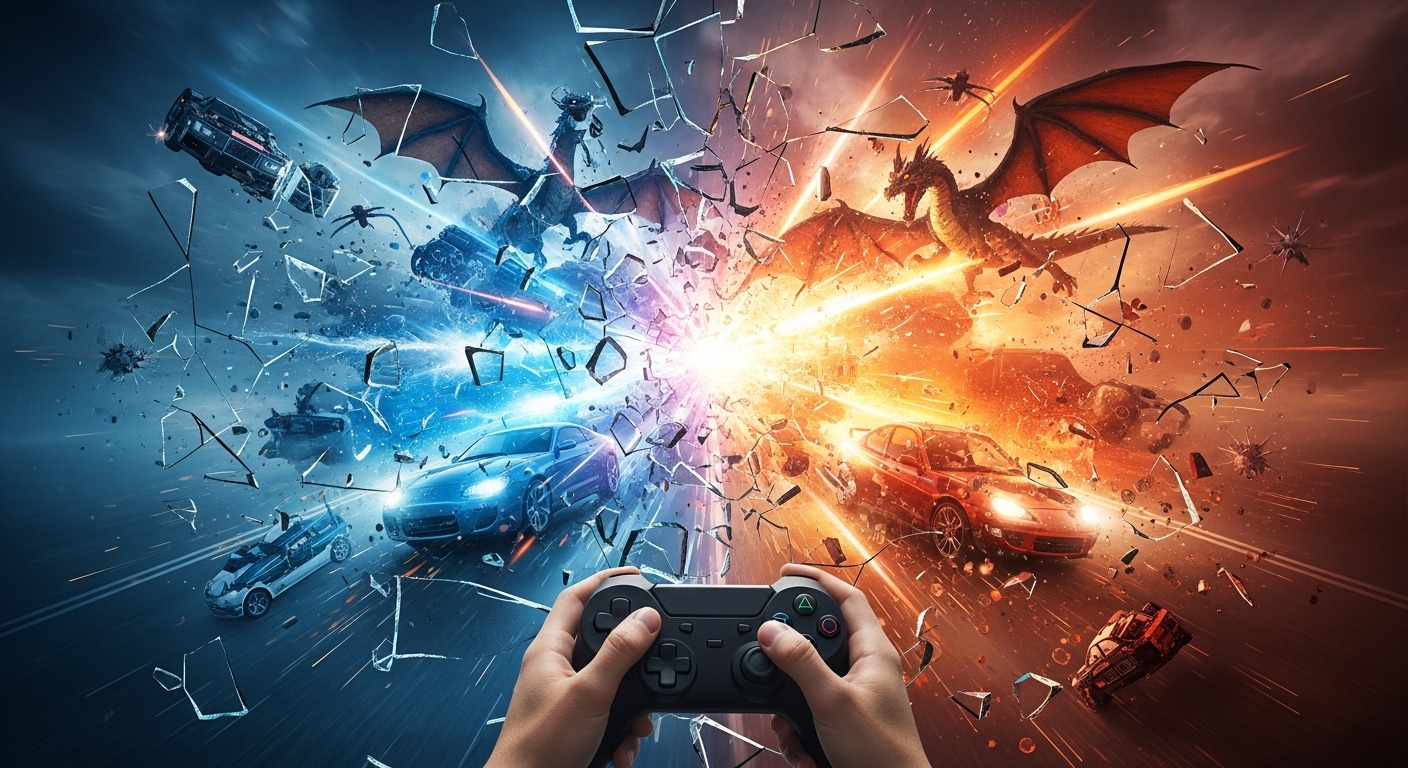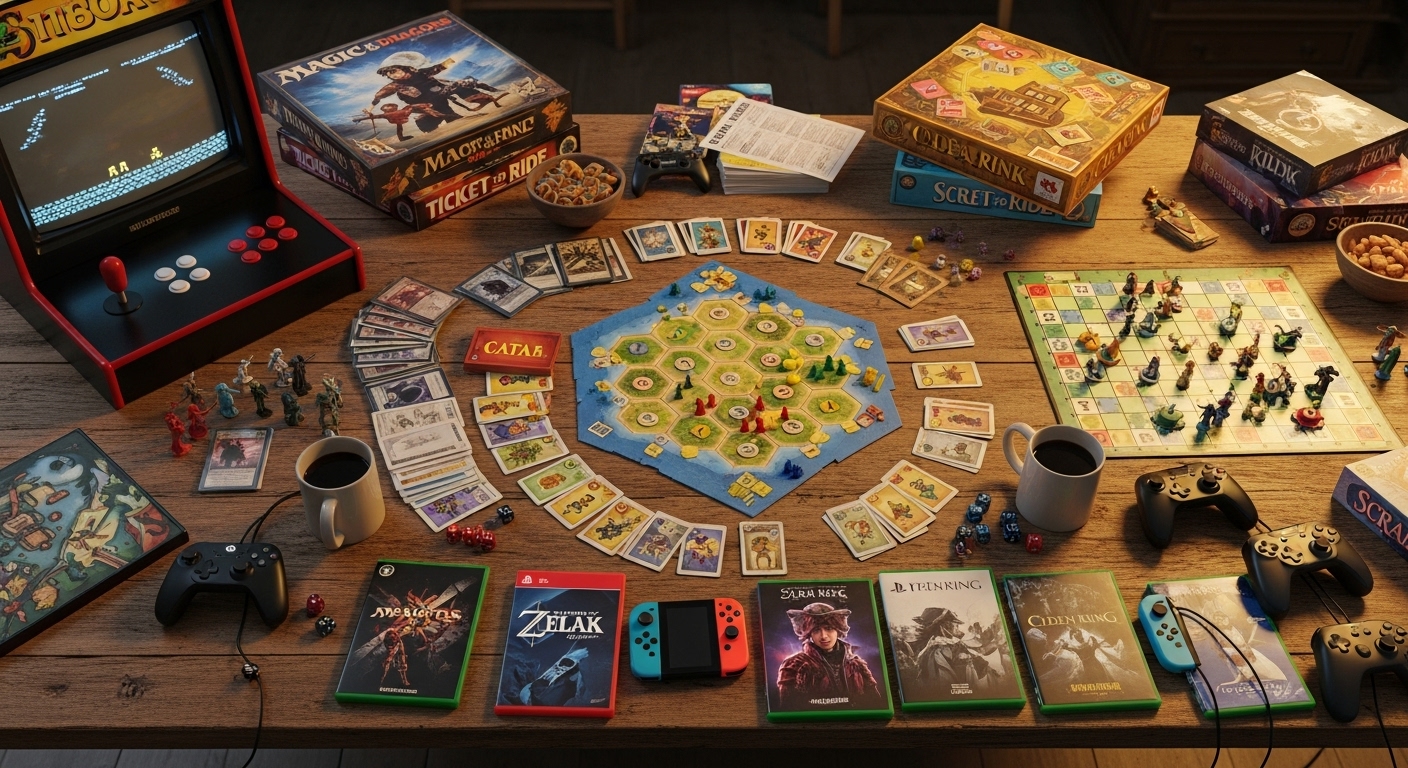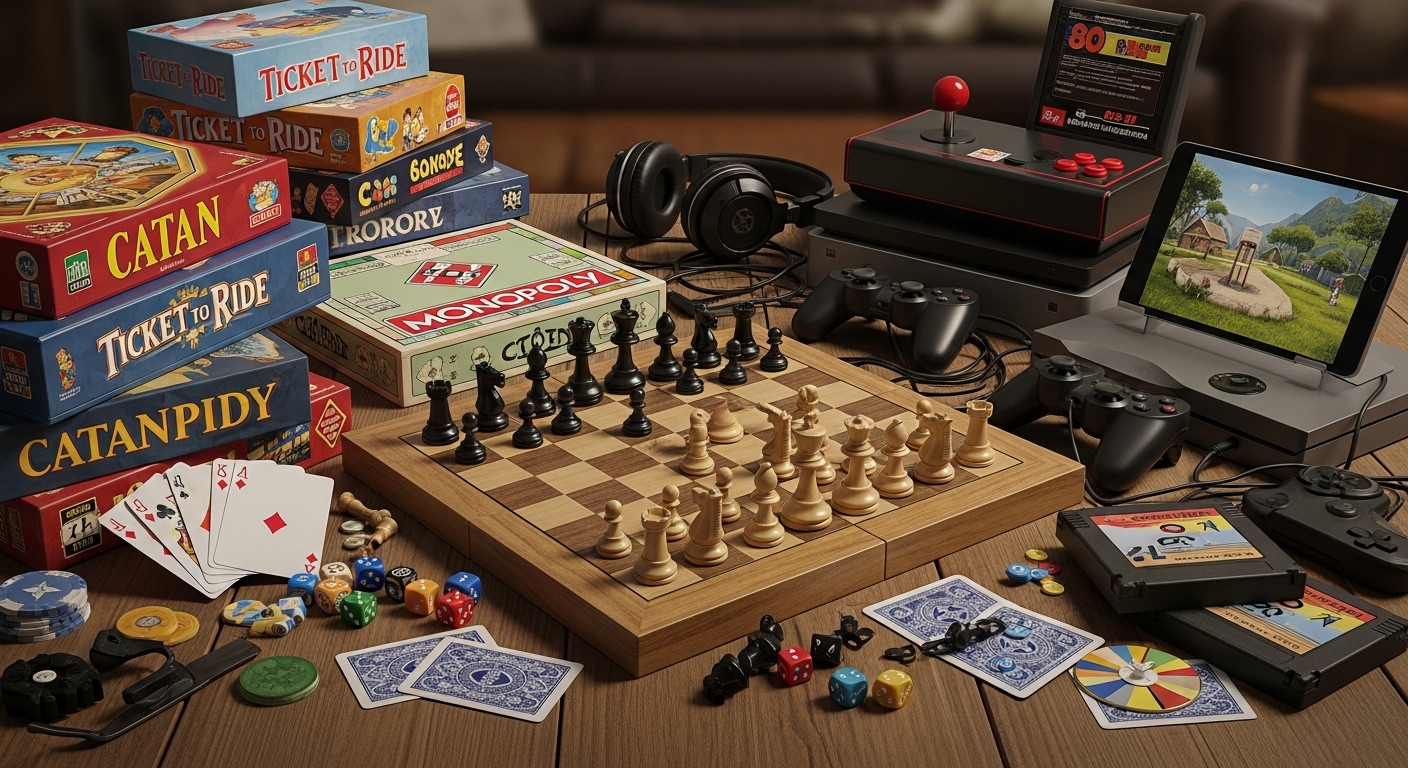Games have been part of human civilization for thousands of years. They are not merely forms of entertainment but reflections of our creativity, competition, and community spirit. Whether played on dusty fields, glowing screens, or in our imaginations, games unite people across cultures and generations. The evolution of games tells a powerful story of human progress, technology, and emotion. From traditional board games and outdoor activities to the massive digital universes of today, gaming has become one of the defining aspects of modern life.
The Origins of Play
Long before technology existed, games were a way for humans to connect, learn, and survive. In ancient times, people played games using stones, sticks, and handmade boards. Some of the earliest recorded games, such as Senet in ancient Egypt or Go in China, were not just for amusement. They were symbolic, often representing the battle between life and death, fate and chance. These ancient games trained the mind, encouraged strategic thinking, and often carried spiritual or educational significance.
Children in every culture have always created their own games from what was available to them. A few rocks could become players in a race, or a piece of chalk could turn the ground into a playing field. This instinct to play is something deeply rooted in human nature. Even animals engage in play to learn and socialize, suggesting that gaming is more than a pastime—it is a natural behavior linked to development and creativity.
Traditional Games and Their Cultural Value
As civilizations evolved, games became structured and organized. They were passed down through generations, often forming an essential part of festivals and community gatherings. Games like chess, backgammon, and mancala taught logic and patience, while outdoor activities like tag, hide and seek, and tug of war built teamwork and strength.
In many cultures, games served as social glue. They brought people together in times of joy and celebration. For example, traditional African games such as Oware encouraged communal interaction, while in medieval Europe, jousting tournaments were both entertainment and a way to display courage. Indigenous tribes across the world also had ceremonial games that honored gods, marked seasonal changes, or taught survival skills.
Traditional games remind us of simplicity and human connection. Unlike modern gaming, which often relies on technology, these games were pure, requiring nothing but imagination and companionship. Even today, in the age of smartphones, one can still find children kicking a ball on the street, echoing the timeless rhythm of play.
The Birth of Modern Sports
With the rise of organized societies came the formalization of games into sports. Sports are games structured by rules, competition, and spectatorship. The Greeks introduced the Olympic Games, a symbol of physical excellence and national pride that continues today. Sports evolved into global phenomena—football, cricket, basketball, and tennis became languages understood across borders.
Sports embody discipline, teamwork, and perseverance. A game of football, for instance, is more than scoring goals. It is about strategy, coordination, and emotional resilience. The beauty of sports lies in their unpredictability. No matter how skilled a player is, there is always a possibility of surprise—a reminder that effort and chance coexist in life.
As sports grew, they began to shape national identities. Countries take pride in their teams and athletes. Victories on the field translate into pride at home. From the cricket-crazed nations of South Asia to the football-loving cultures of Europe and South America, sports are not just games; they are shared dreams and collective emotions.
The Rise of Video Games
The twentieth century brought an entirely new era of gaming—the digital revolution. With the invention of computers and consoles, games entered the electronic age. Pong, one of the earliest video games, was simple—a bouncing ball and two paddles—but it marked the beginning of something extraordinary.
Video games transformed play from physical to virtual. Players could now explore fantasy worlds, battle enemies, solve puzzles, and create empires—all from the comfort of their homes. The 1980s and 1990s witnessed explosive growth in gaming, with consoles like Nintendo, Sega, and PlayStation becoming household names. Characters such as Mario, Sonic, and Lara Croft became icons, symbolizing the new culture of digital entertainment.
The charm of video games lies in their immersive experience. They allow people to live multiple lives, make choices, and experience consequences without real-world risks. Games like The Legend of Zelda, Final Fantasy, and later open-world masterpieces like Grand Theft Auto and The Witcher expanded storytelling possibilities. A well-crafted video game is no less than an art form, blending music, visuals, writing, and interactivity.
The Online Revolution and Multiplayer Gaming
With the rise of the internet, games evolved from solo experiences to massive online communities. Multiplayer gaming became the heartbeat of the industry. Players could now connect with others around the globe, forming friendships, rivalries, and teams.
Games like Counter-Strike, Dota, and World of Warcraft pioneered online gaming, creating spaces where millions interacted daily. These virtual worlds gave rise to esports—competitive gaming on a global stage. Today, esports tournaments fill stadiums, and professional gamers are treated as celebrities. The level of skill, strategy, and dedication required to compete professionally has shattered the old notion that gaming is a mere hobby.
Online gaming also fostered collaboration. Many players meet lifelong friends and even partners through shared gaming experiences. Voice chats, forums, and streaming have made gaming a social hub, where people share ideas, teach others, and celebrate victories together.
Mobile Gaming and Accessibility
The introduction of smartphones changed gaming forever. Suddenly, games were in everyone’s pocket. You no longer needed an expensive console or computer to enjoy gaming. Mobile titles like Candy Crush, Clash of Clans, and PUBG Mobile became global sensations.
Mobile gaming opened the door for people who had never considered themselves gamers. It democratized the industry, allowing anyone with a phone to play. This accessibility expanded the definition of gaming. It was no longer limited to a specific age or culture. Whether a child playing a puzzle game or an adult relaxing with a word challenge, gaming became universal.
The Art and Psychology Behind Games
Behind every game lies design and psychology. Game designers craft experiences that engage the human mind through challenge, reward, and curiosity. The best games keep players in a state of flow—where the difficulty level matches the player’s skill, creating immersion and satisfaction.
Games often mirror life lessons. They teach patience, persistence, and adaptability. Losing in a game can be frustrating, but it also encourages resilience. Players learn from mistakes, adapt strategies, and celebrate improvement. This emotional loop is what keeps people playing—not just for fun, but for personal growth.
Moreover, storytelling in games has reached cinematic levels. Modern games like Red Dead Redemption, The Last of Us, and God of War combine deep narratives with player choice, allowing emotional connections unlike any other medium. Players do not just watch a story—they live it.
The Role of Technology in Shaping Games
Technology continues to push gaming boundaries. Virtual reality (VR) and augmented reality (AR) now allow players to step inside their games. VR headsets offer lifelike experiences where you can swing a sword, drive a car, or walk through digital landscapes that feel real. AR games, like those blending real-world environments with digital elements, bridge imagination and reality.
Artificial intelligence also plays a growing role. Smarter enemies, adaptive gameplay, and realistic physics make games more engaging. Graphics technology has reached astonishing levels, rendering worlds that rival cinema in beauty and realism. Each technological leap adds new dimensions to the player’s journey.
Cloud gaming is another innovation changing how games are played. Instead of requiring powerful devices, players can now stream games directly from servers. This makes high-end gaming accessible to more people, breaking barriers once defined by hardware limitations.
Gaming as a Form of Art and Expression
Games are no longer seen only as entertainment; they are recognized as a form of art. Like movies or books, games tell stories, evoke emotions, and express ideas. Independent game developers, or “indie” creators, have played a major role in this transformation. Through unique storytelling and creative design, they explore themes like loneliness, love, identity, and freedom.
Games such as Journey, Celeste, and Inside prove that gaming can be deeply emotional and philosophical. The combination of sound, color, movement, and choice creates an interactive art form unlike any other. The player becomes part of the artwork, influencing its flow and outcome.
The Social and Economic Impact of Gaming
The gaming industry today is larger than the film and music industries combined. It generates billions in revenue and employs millions worldwide. From developers and designers to voice actors and streamers, gaming has become a major economic force.
Socially, games also play a positive role. They help develop cognitive skills, problem-solving abilities, and coordination. Online communities often serve as support networks, especially for people who find comfort and belonging in digital spaces. Games can even promote empathy by placing players in diverse roles and perspectives.
However, the industry is not without challenges. Issues such as addiction, toxicity in online communities, and excessive commercialization raise concerns. Balancing creativity, ethics, and player well-being remains an ongoing discussion in the gaming world.
The Future of Games
The future of gaming promises even more innovation. Artificial intelligence will create smarter worlds that adapt to each player’s style. Virtual reality may evolve into shared digital realms that mirror real life. The concept of the metaverse—an interconnected digital universe—could redefine how we work, play, and socialize.
In education, games will become essential tools for learning. Already, simulation games are used to train doctors, pilots, and engineers. Interactive experiences make learning engaging and memorable. In the future, classrooms may feel more like game worlds, where curiosity drives discovery.
Gaming will also continue to influence culture. Music, fashion, and even film increasingly borrow from gaming aesthetics. Esports will grow into mainstream entertainment, and storytelling in games will rival literature and cinema in depth and artistry.
The Human Side of Games
At the core of all these developments lies the same essence that began thousands of years ago—the joy of play. Whether digital or physical, competitive or cooperative, games connect us to something deeply human. They let us explore, imagine, and express ourselves.
Gaming is not about escaping reality but expanding it. Every player, no matter their age or background, steps into a world where they can experiment with identity, face challenges, and find meaning. It is a reminder that creativity and curiosity are endless.
Conclusion
The world of games is vast and evolving, but its heart remains the same. From ancient stones to virtual worlds, from backyard cricket to international esports, games have always been a reflection of who we are. They capture our desire to learn, compete, and dream.
As technology continues to advance, gaming will keep redefining entertainment, art, and human connection. It is a journey that never truly ends—each generation creates new forms of play, new stories, and new ways to connect. In the end, games are not just about winning or losing. They are about living, learning, and sharing experiences that transcend the boundaries of time and space.




